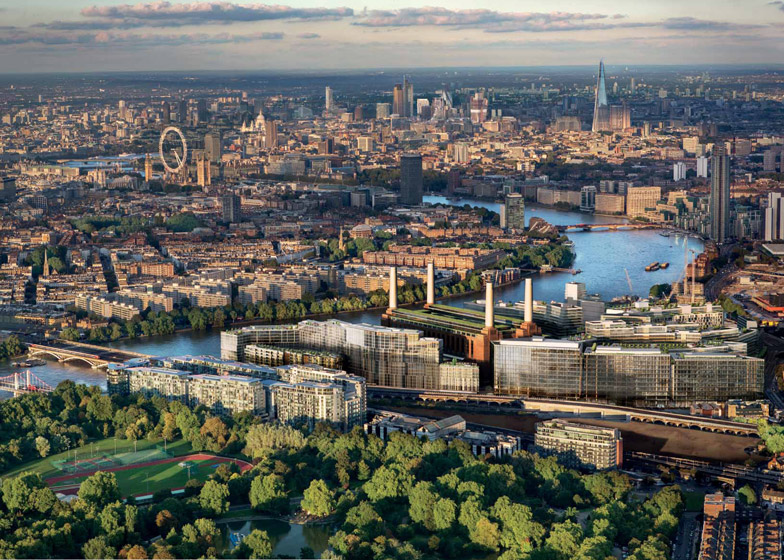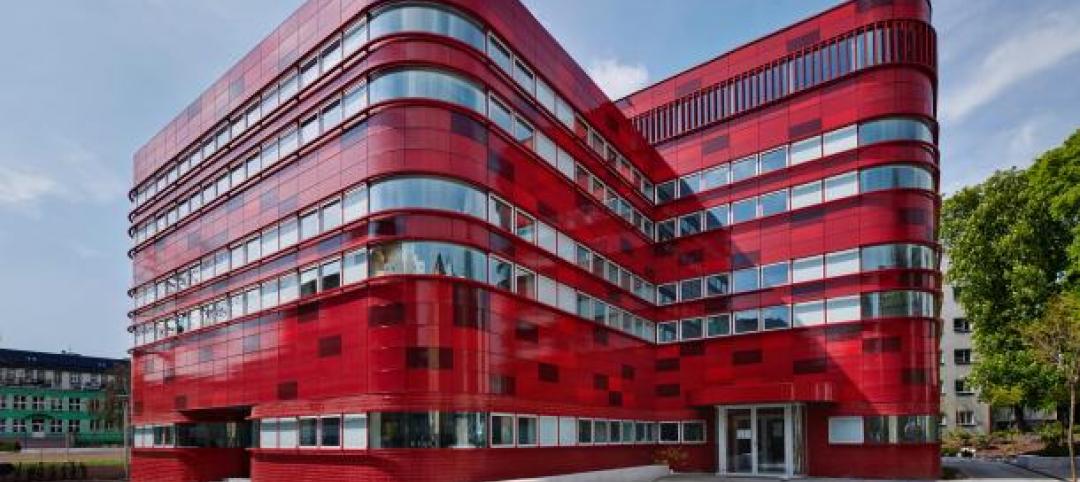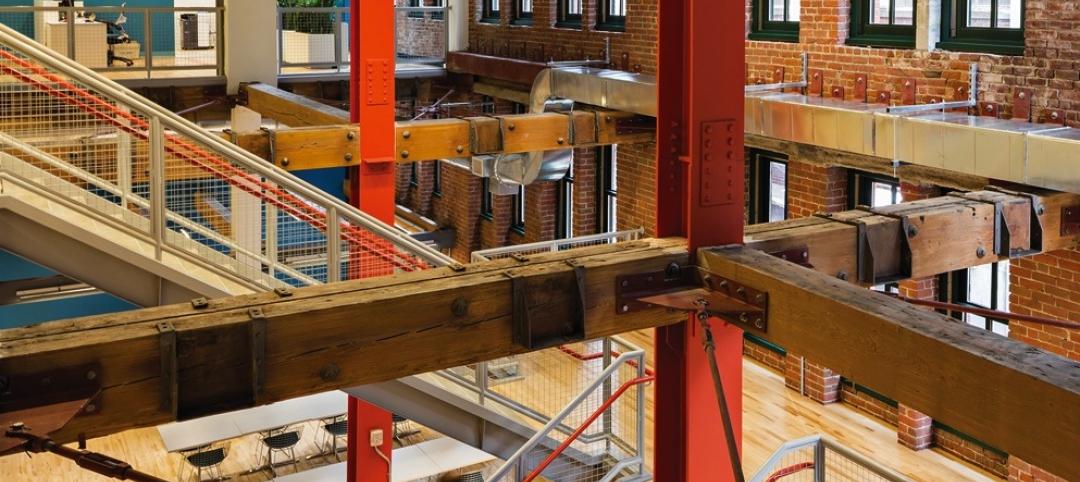In what Frank Gehry described as "a neighborhood and a place for people to live that respects the iconic Battersea Power Station while connecting it into the broader fabric of the city," the famed architect and his peer, Norman Foster, are collaborating on a design scheme for a retail district for the £8 billion redevelopment of the Battersea Power Station in London.
Known as The High Street, the retail development will include restaurants, shops, a library, a hotel, and a leisure center. Foster + Partners will add residential buildings to the east, while Gehry will work on the residential zone to the west - the architect's first major project in the U.K., according to a report by Dezeen.
Completed in the 1950s, the Battersea Power Station was decommissioned in 1983. Following several unsuccessful attempts to redevelop the site, it appears the latest master plan, designed by Rafael Vinoly for Malaysian developers SP Setia and Sime Darby, will more forward as planned. It includes building some 3,400 homes.
For more on the Gehry-Foster collaboration at Battersea Power Station, read Dezeen's report.
Related Stories
| Jul 29, 2014
AECOM's buying spree continues: Deal to acquire Hunt Construction Group in the works
The acquisition comes just two weeks after AECOM's $6 billion deal to acquire rival engineering and construction company URS Corp.
| Jul 29, 2014
MADGI hires David Stuart, AIA, as Studio Director in New York City
Stuart will support the firm's $375 million multifamily residential design studio.
| Jul 29, 2014
Best practices for public-private partnerships: Free AIAI guide
Resource explores P3 best practices, including legislation and procurement methods.
| Jul 29, 2014
Blood center uses architecture to encourage blood donation [slideshow]
Designed by FAAB Architektura, the project's aesthetic was guided by its function. The color scheme, facade panel glossiness, and the irregularly elevated leitmotif were intentionally designed to evoke the "richness" of blood, according to the architects.
| Jul 28, 2014
Reconstruction market benefits from improving economy, new technology [2014 Giants 300 Report]
Following years of fairly lackluster demand for commercial property remodeling, reconstruction revenue is improving, according to the 2014 Giants 300 report.
| Jul 28, 2014
Reconstruction Sector Construction Firms [2014 Giants 300 Report]
Structure Tone, Turner, and Gilbane top Building Design+Construction's 2014 ranking of the largest reconstruction contractor and construction management firms in the U.S.
| Jul 28, 2014
Reconstruction Sector Engineering Firms [2014 Giants 300 Report]
Jacobs, URS, and Wiss, Janney, Elstner top Building Design+Construction's 2014 ranking of the largest reconstruction engineering and engineering/architecture firms in the U.S.
| Jul 28, 2014
Reconstruction Sector Architecture Firms [2014 Giants 300 Report]
Stantec, HDR, and HOK top Building Design+Construction's 2014 ranking of the largest reconstruction architecture and architecture/engineering firms in the U.S.
| Jul 28, 2014
LEO A DALY hires Peter Yakowicz to oversee VA projects
New hire will work with healthcare and federal market sectors on programs specifically for the Department of Veterans Affairs.















